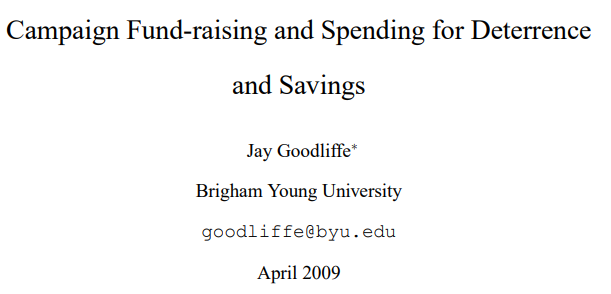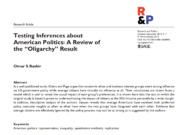In this article, the author explores the deterrence and savings rationales underlying war chests, a term for money saved from one election to be used for the next election. Through use of a model of fund-raising in repeated elections where funds are raised to deter the entry of strong challengers and to increase the probability of winning through campaign spending, the author offers an alternative explanation as to why war chests appear to deter in some circumstances but not in others. Analysis of this two-election model with a randomly chosen challenger squares with previous empirical tests and unmasks the savings behavior function of war chests. Because there is a second election, use of a two-election model allows for the creation of a war chest because an incumbent saves money from fund-raising efforts in the first election for use in the second election. For stronger incumbents, a war chest is a byproduct of their efforts to distinguish themselves from weaker incumbents: an effort undertaken to deter high quality challengers from entering future races. Accordingly, a war chest is initially created for deterrence and eventually becomes savings for future elections.
For further reading on this issue in other studies by Jay Goodliffe, see:














